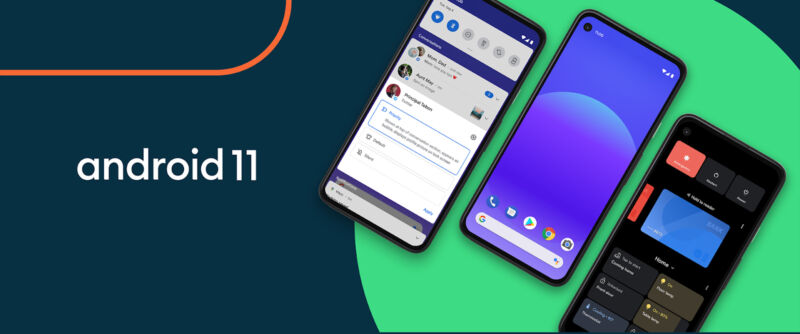
Enlarge (credit: Google)
Android 11 has finally arrived after a lengthy beta process that started approximately three years ago in February 2020. This is the 30th release of Android, if we're counting by API levels, and in a year when it seems nearly everything has been delayed or canceled, Google has managed to turn in one of the smaller Android releases.
Last year, Android 10 was a massive release, adding gesture navigation, a dark mode, Project Mainline, a dual-boot system, scoped storage, foldable smartphone support, and a million other things. In comparison, Android 11 is more limited. This being the annual Ars Technica review, however, there are of course still plenty of things to talk about—like yet another notification panel revamp, a new media player, chat bubbles, smart home controls, and more.
Table of Contents
- The notification panel
- The persistent media carousel
- Conversations and bubbles
- Notification history
- One-time and auto-revoking permissions
- The new power menu and smart home controls
- Get better smart home support, Google
- Emoji 13.0
- Project Mainline, Part 2—Even more modularity
- Google's Scoped Storage brinkmanship
- Keyboard autofill gets a big upgrade
- Grab bag
- Building on Android 10, with a few upgrades of its own
- The good
- The bad
- The ugly
The notification panel
The notification panel is one of the biggest strengths of Android, and Google can't seem to let a major release go by without iterating on it. This year, the theme seems to be around organization and creating what Google calls a "dedicated persistent space" for certain types of notifications.
Read 57 remaining paragraphs | Comments
https://ift.tt/2FU8583
Comments
Post a Comment